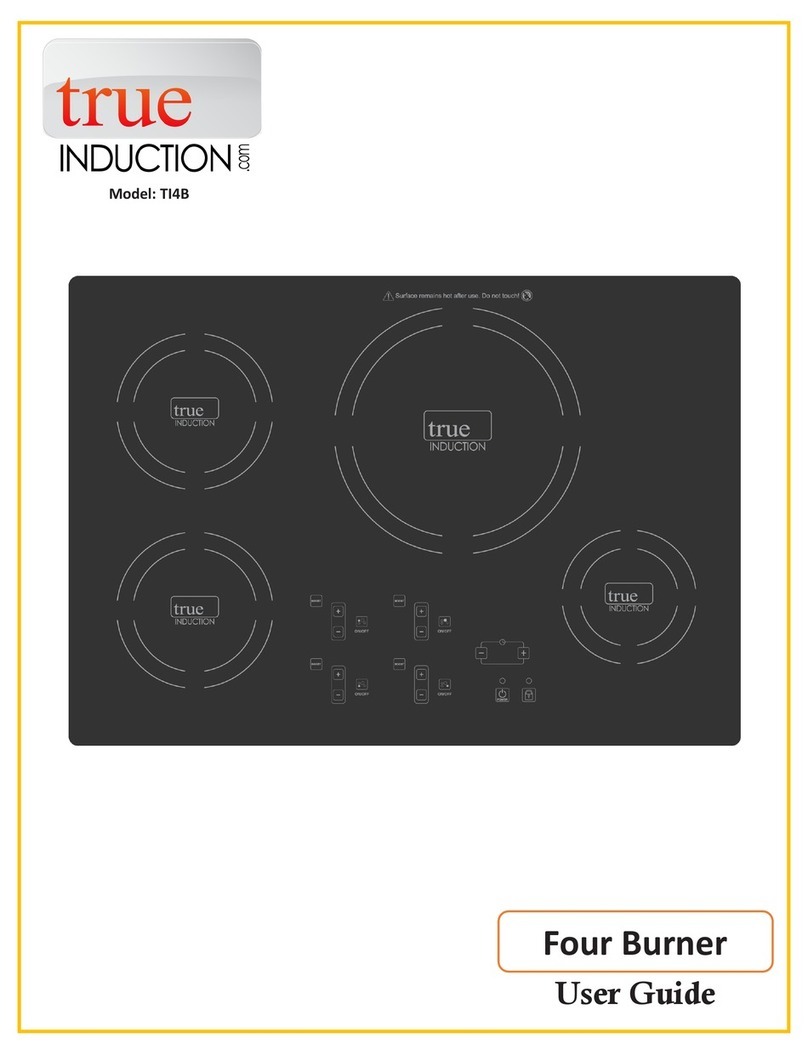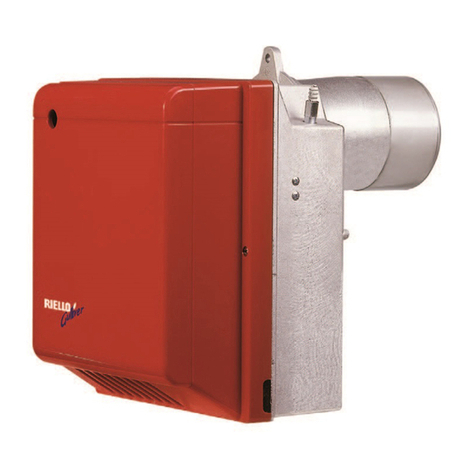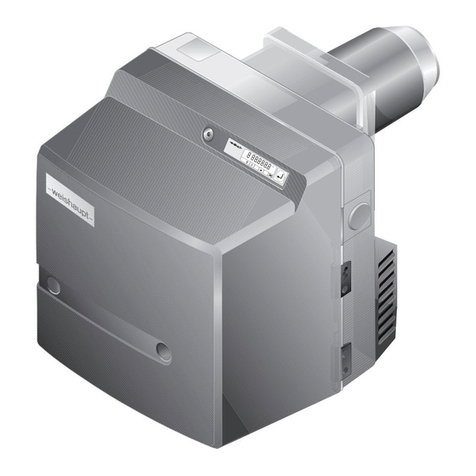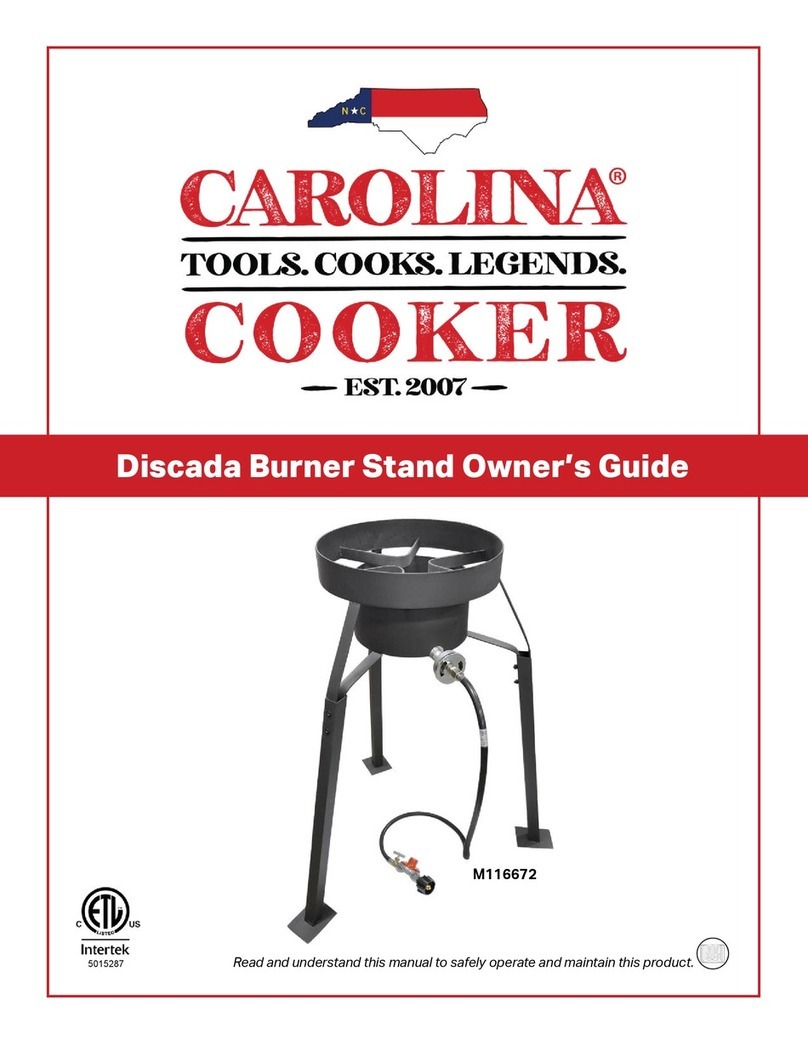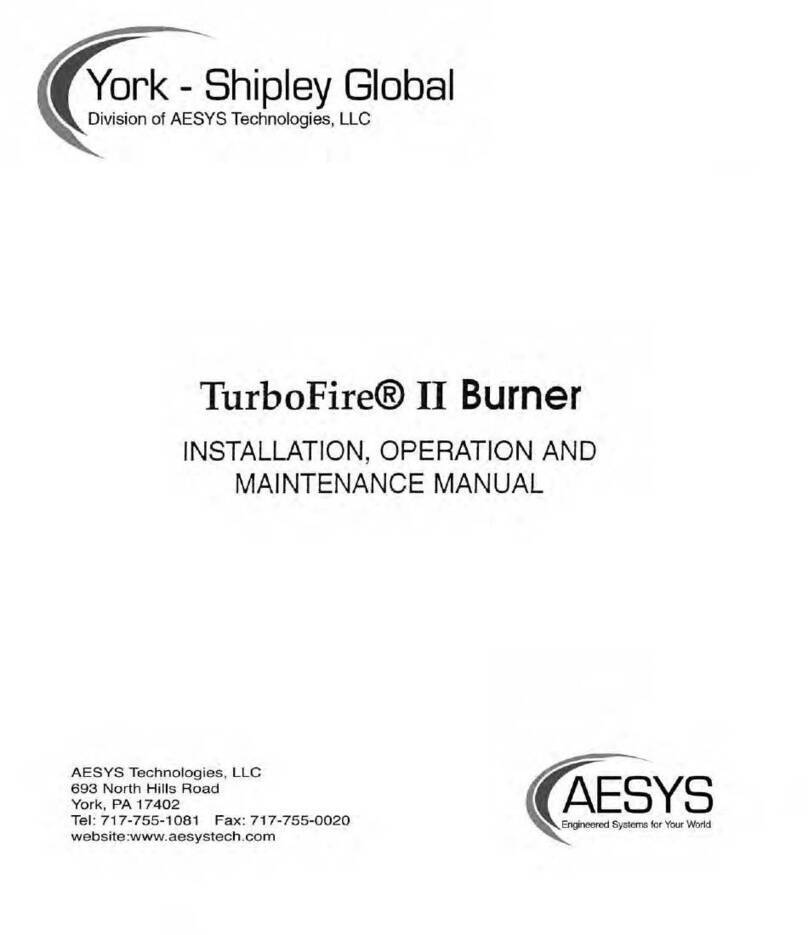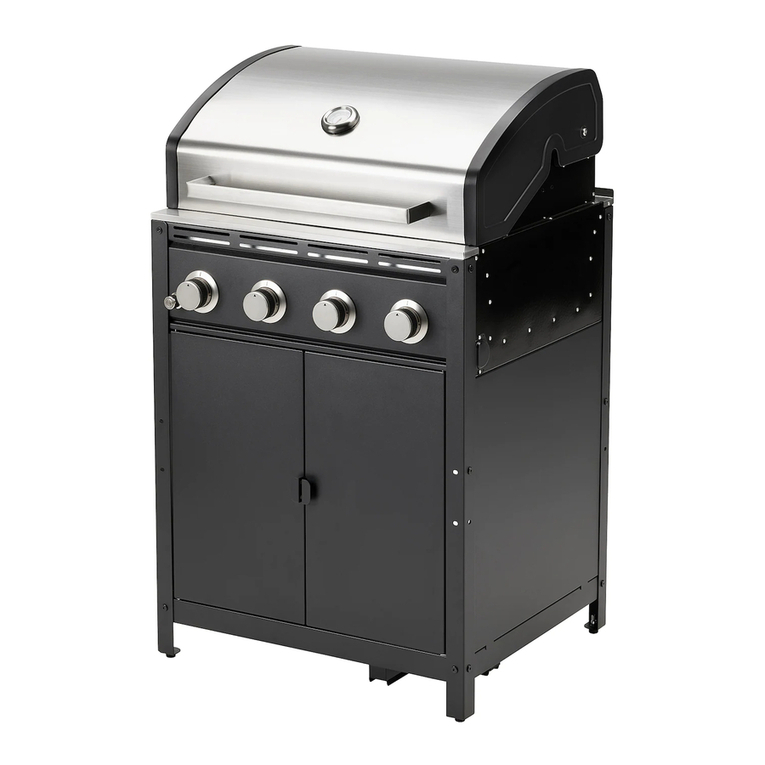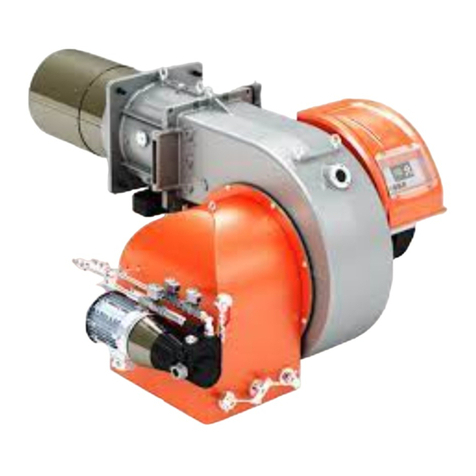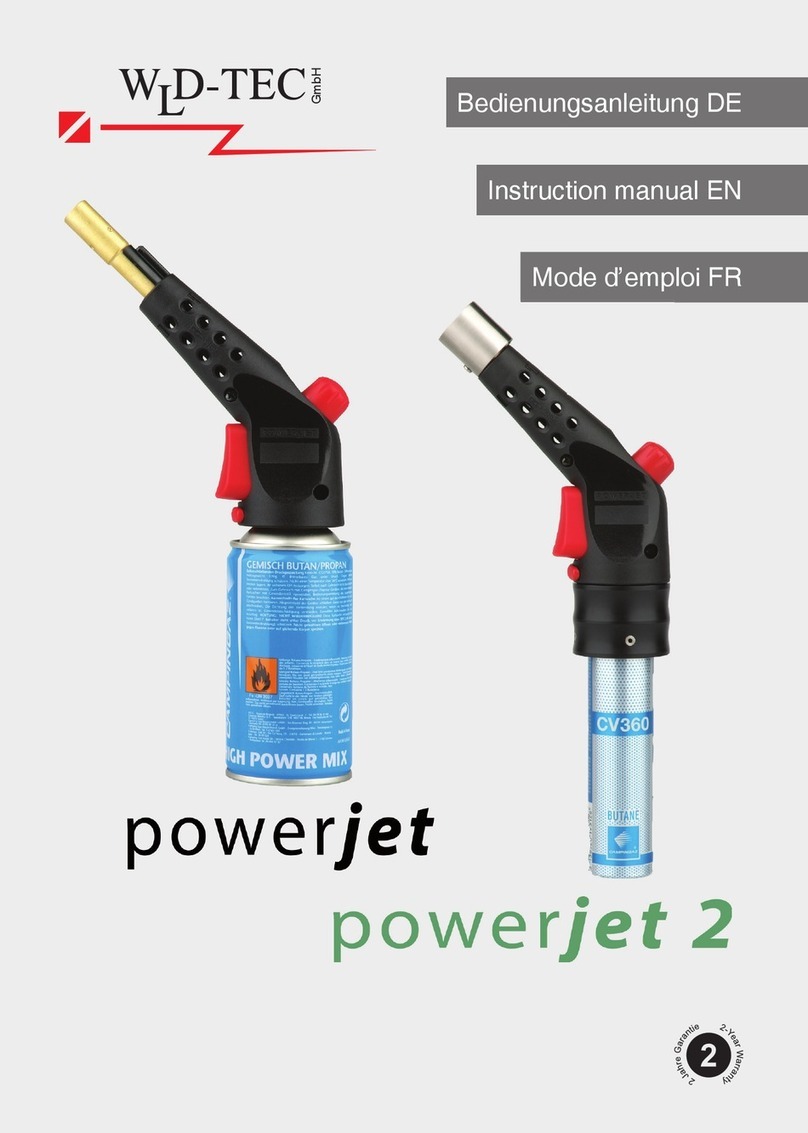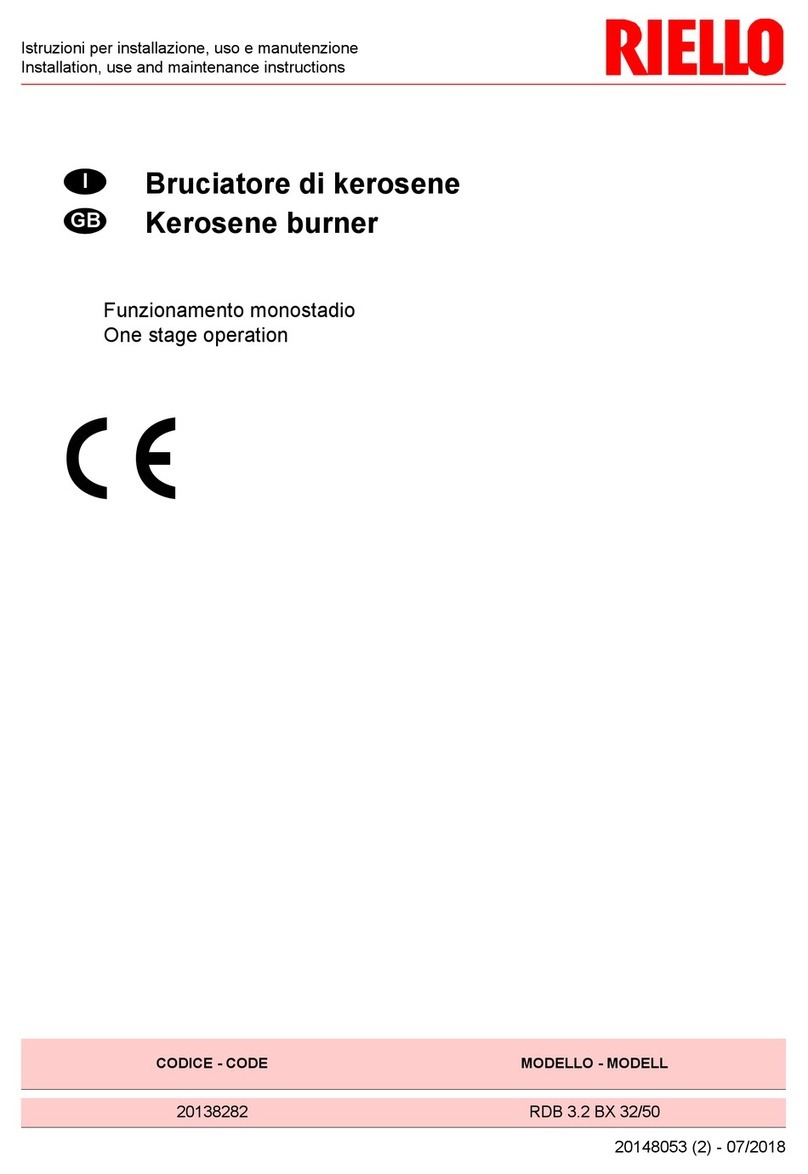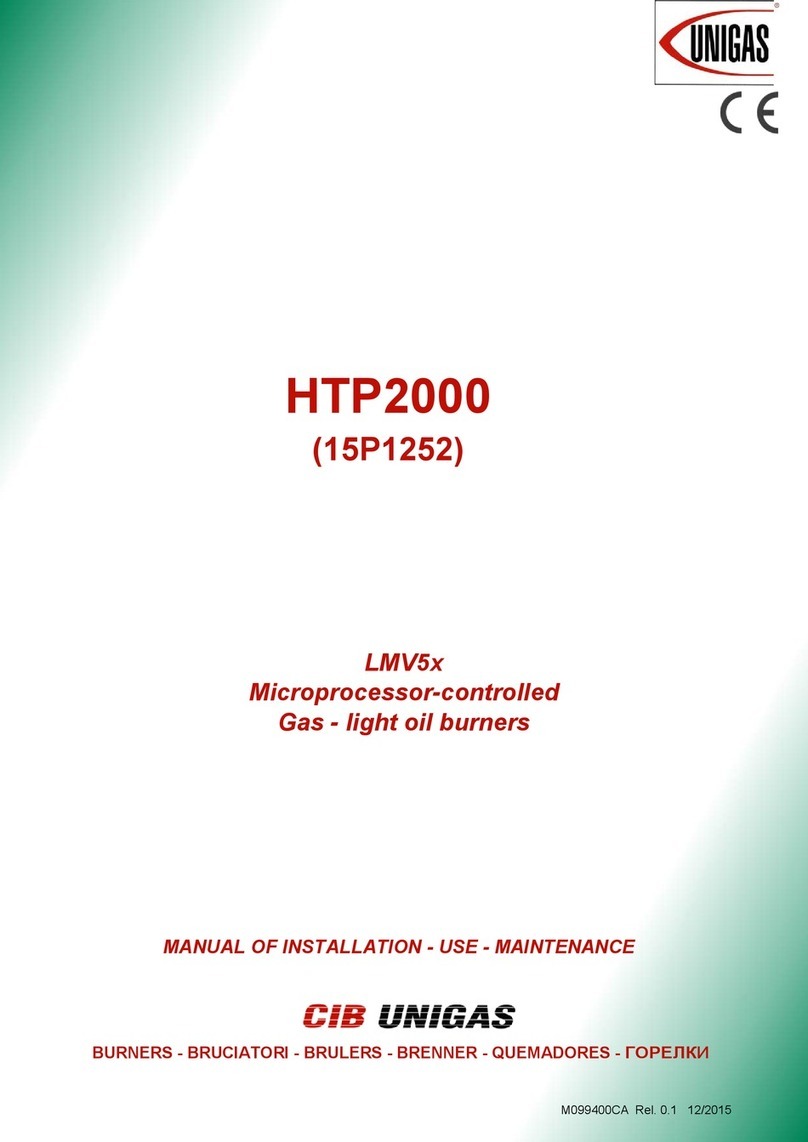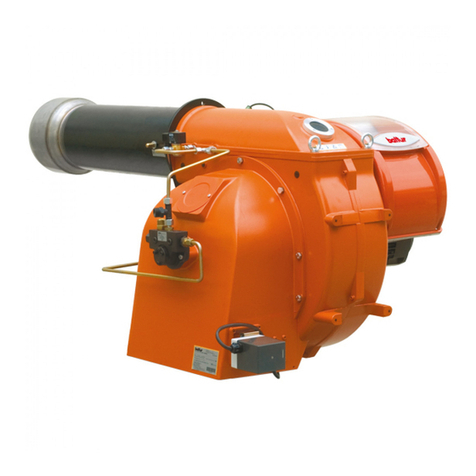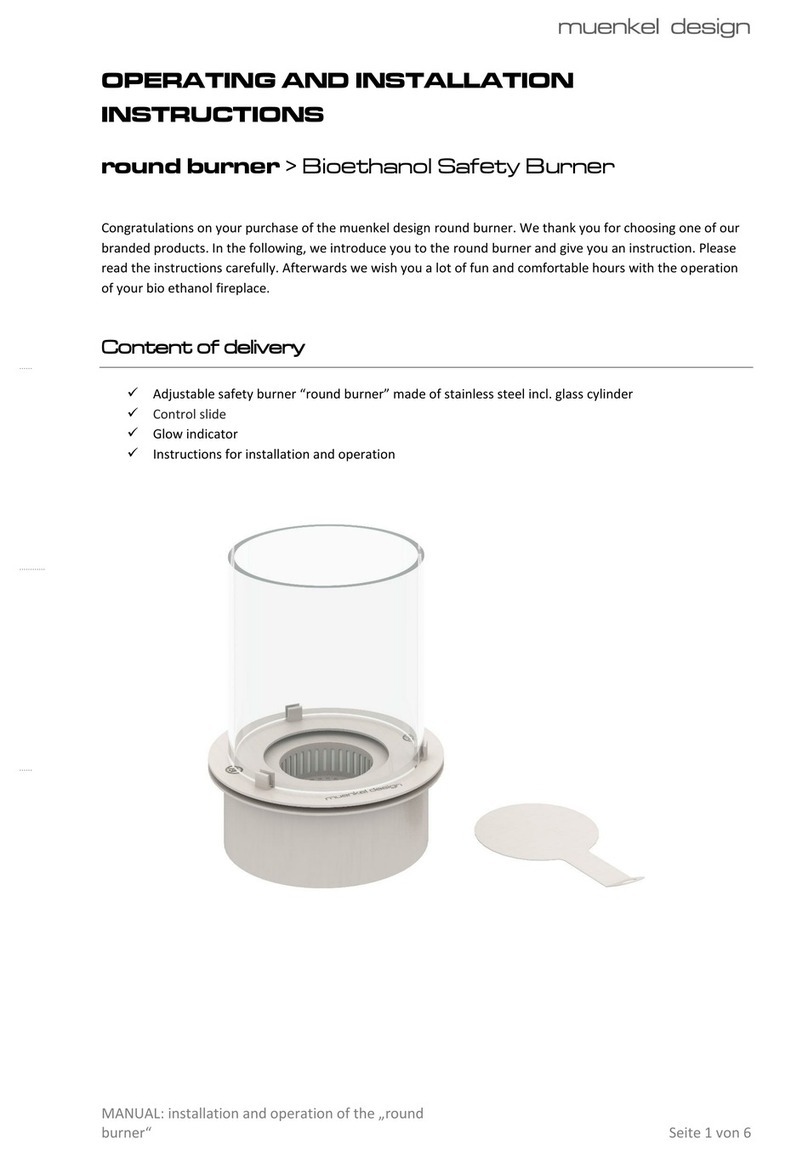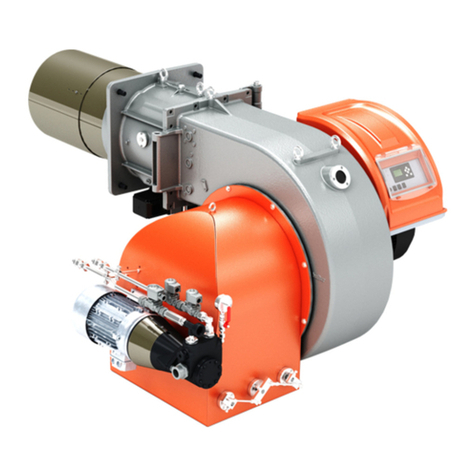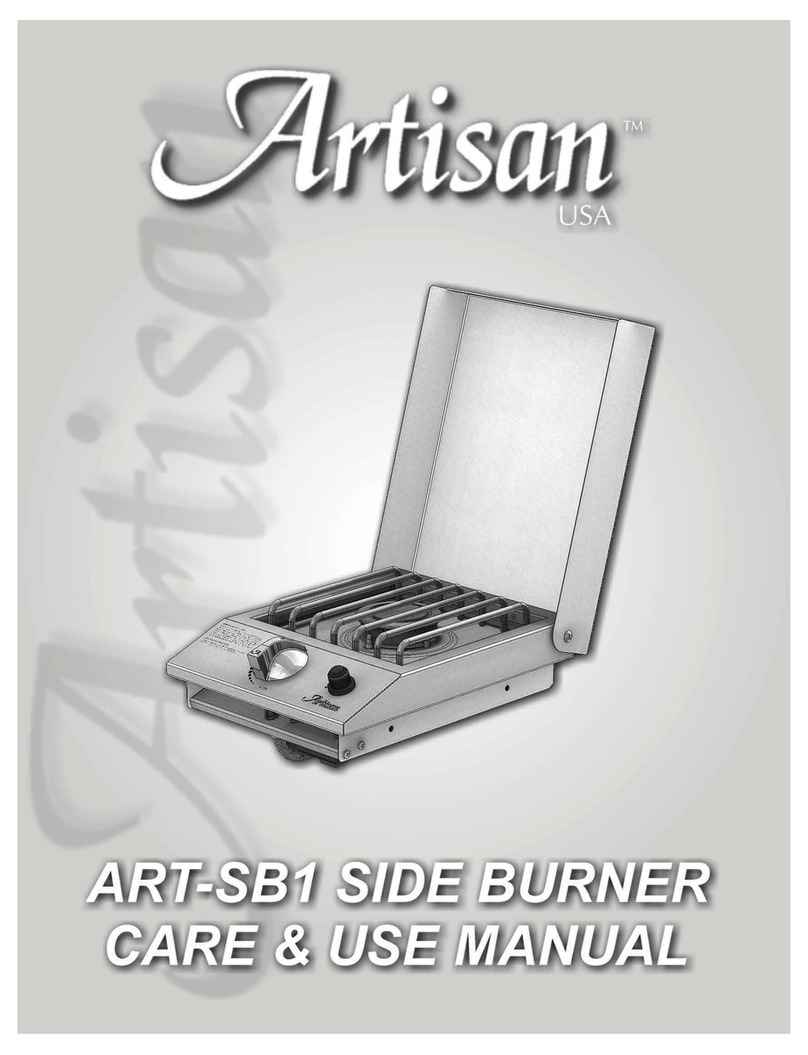
- 7 -
Extinguishing
17. Fully close the cock and solenoid valve located immediately before the burner, and check to
confirm that the fire has been extinguished.
※Stop the blower after the in-furnace temperature lowers to below 500℃ to protect the nozzle.
8) Inspection (Nozzle, Combustion cylinder)
1. Confirm that the shut-off valve, the solenoid valve and the combustion blower are powered OFF.
2. Loosen the union and others of the gas piping.
3. Loosen the hexagon head bolt ⑮ that holds the air body ② and gas body ③ together.
4. Hold the gas body firmly and slowly pull out the air nozzle ⑥, gas pipe ⑤ and spark plug ⑫ at the
same time.
5. Remove the air pipe union or flange.
6. Loosen the hexagon head bolt ⑯ that holds the frame cone ① and air body ② together, and
remove the air body.
7. Loosen the hex nuts holding the furnace body and flame cone ①, and remove the flame cone from
the furnace body.
8. Check for burnt-out around the gas hole of the gas pipe ⑤, air nozzle ⑥, and spark plug ⑫, and
check for loose parts.
9. Visually check the sparking condition of the spark plug, and replace the insulator if there are
cracks or other abnormalities. Failure to do so may cause misfiring.
10. When replacing the air nozzle, after checking the position setting with the spark plug, loosen the
hexagon socket set screw ⑦ attached to the air nozzle and perform the replacement work.
11. Check the condition of the inner and outer surfaces of the frame cone, and clean it if foreign
matter is attached. In addition, if the combustion cylinder is damaged or burned, please contact us
as it may affect combustion.
12. The ceramic tube ㉑ is fragile, so please handle it with care. Doing so may cause damage. For the
ceramic tube, loosen the dish screw ㉖ and remove the ceramic tube. At this time, if the packing
㉔㉕ is torn, replace it. cause air leakage
13. Assemble in the reverse order.
※Perform the inspection after cooling the furnace. Also, be sure to wear protective gloves.
※Please refer to the attached sheet and structural drawing.
※Check and clean the burner and accessories as needed depending on the usage conditions.


